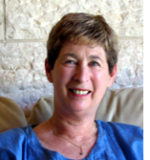
JERUSALEM — At an exhibit entitled ’Fateful Choices: Art from the Gurlitt Trove,’ the Israel Museum’s Curator of European Art, Shlomit Steinberg, gave a fascinating talk about the history, geography, sociology and provenance of the huge collection of paintings, drawings, prints and lithographs found in 2012 in an apartment belonging to Cornelius Gurlitt, an elderly recluse living in Munich and virtually unknown to the German authorities.
By chance, the strange gentleman who occasionally traveled by train to Switzerland, where he would sell a painting, drawing or print to art dealers, was stopped for ticket inspection. He had not broken any law, he protested when asked to clarify why he was carrying a large sum of cash. Upon further investigation it transpired that he had never paid taxes, never worked, never registered at a university, never bought or sold an apartment, never married and never registered the birth of a child. Thus he had remained ‘under the radar’ of the authorities throughout his adult life.
When the tax inspectors looked further into the activities of the mysterious individual, it transpired that in addition to two apartments in Munich he owned another one in Salzburg, Austria. These were all subsequently found to be crammed full of art works of every conceivable kind and genre. Further investigation revealed that Cornelius’s father, Hildebrand, had been a gallery owner and art dealer, a known figure on the German art scene, from the 1920s until his death in 1956.
In the global media, the collection was touted as ‘Nazi looted art,’ but that is not completely true. Some of the art works were paintings and drawings made by other members of the Gurlitt family, several of whom were artistically talented. As an art dealer, Hildebrand had accumulated a diverse collection of works from various periods, and some of these were presumed to have been sold legitimately to art collectors in the period of Weimar Germany. After the Nazis’ rise to power, the opportunities for buying works defined by them as ‘degenerate’ multiplied, and Hildebrand was not slow to benefit from their availability and reduced price. In addition, in many cases persecuted artists or Jews felt the need to sell their art works in order to cover the heavy cost of leaving Germany. German Jews were required to submit a detailed list of all the furniture and objects in their possession, and in this way many works of art became property of the State.
Hildebrand Gurlitt was appointed an official art dealer on behalf of the Nazi regime and went to Paris to purchase or acquire works of art there. These were destined either for the museum Hitler intended to build in his home town on Linz, Austria, or to be sold to foreign buyers in order to gain much-needed foreign currency for the German war effort. After the war Hildebrand was investigated by the American authorities, and was eventually exonerated of having collaborated with the Nazis. The collection, which contained works by such artists as Monet, Renoir, Gauguin, Liebermann, Toulouse-Lautrec, Courbet, Cézanne, Munch and Manet, was restored to him. After his death in 1956 as the result of a car accident, the collection passed to his widow, Helene, and subsequently to their son, Cornelius.
Cornelius Gurlitt died in May 2014, bequeathing all his property to the Museum of Fine Arts in Bern, Switzerland. Since then the collection has been exhibited in several European cities and a few pictures have been identified as having belonged to Jewish families and returned to their heirs. The exhibition currently on show in the Israel Museum will be followed by others elsewhere in order to enable as many people as possible to view it and, if their claims are confirmed, to regain ownership of works that had once been theirs. The emphasis is now on using due diligence procedures to establish the provenance of the works of art in the collection.
*
Dorothea Shefer-Vanson is a freelance writer and author based in the Jerusalem suburb of Mevasseret Zion, Israel. She may be contacted via dorothea.shefer@sdjewishworld.com